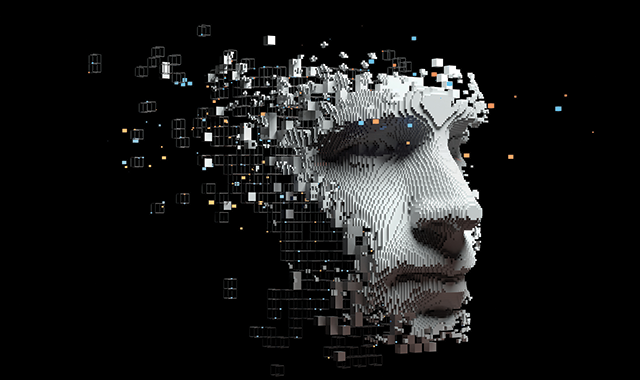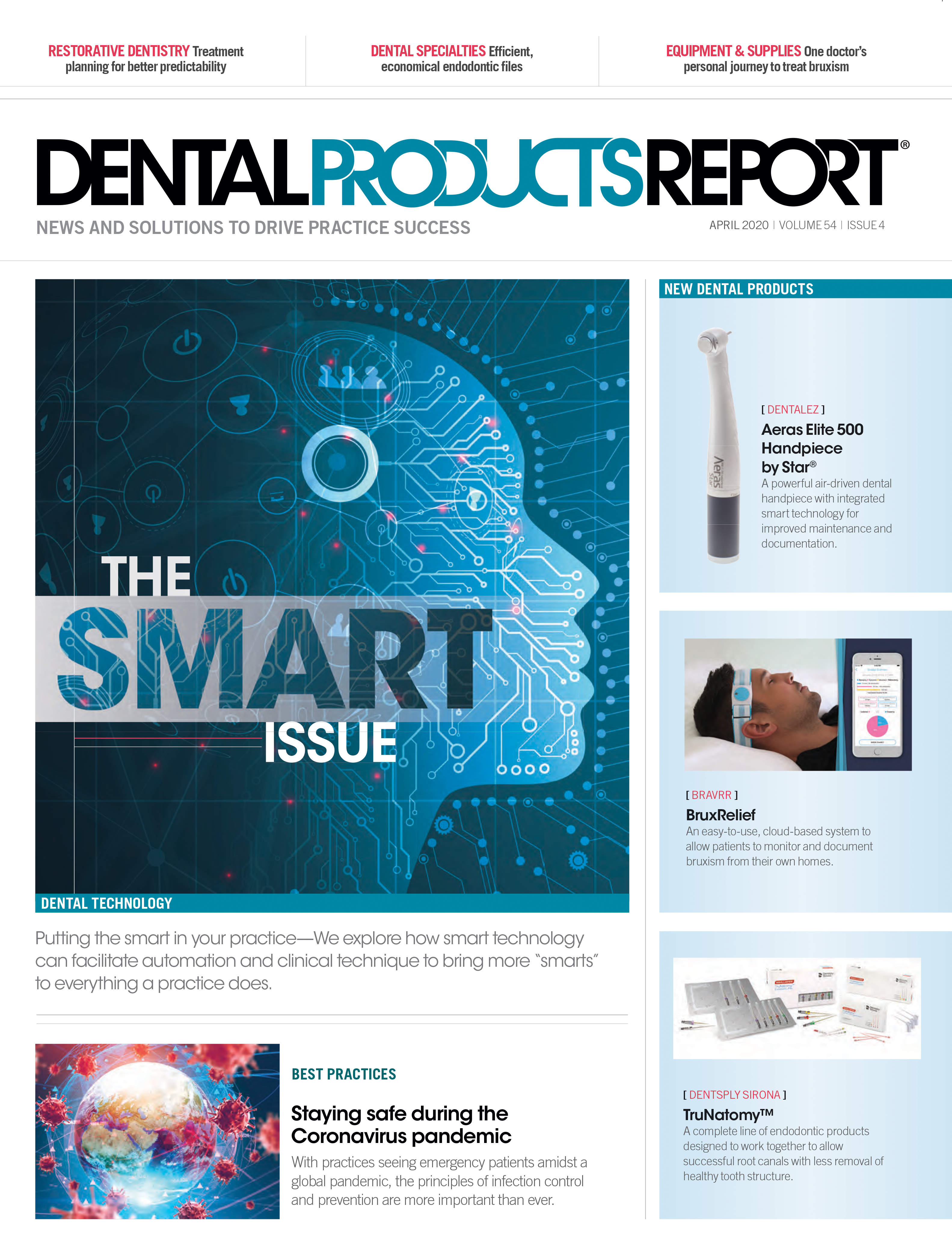Machine learning and AI are poised to transform dental practices in 2020
This article aims to help you better understand emerging technologies that are transforming the field of dentistry, giving dentists more tools for attracting the right types of patients, and increasing their profitability. Find out why artificial intelligence and machine learning should be part of your dental practice’s marketing strategy.

This article aims to help you better understand emerging technologies that are transforming the field of dentistry, giving dentists more tools for attracting the right types of patients, and increasing their profitability. Find out why artificial intelligence and machine learning should be part of your dental practice’s marketing strategy.
What is the most abundant and yet most underused marketing resource for dental practices today?
It’s fair to say the answer is data.
As consumers have increased their use of digital devices and their engagement with digital media,1 and as the healthcare industry as a whole has become more digitized (from electronic health records to data gathered from wearable health tracking devices), the volume of data now available to healthcare providers has exploded. This mass of information is commonly called big data, which alludes to large data sets that need to be analyzed computationally to reveal patterns and trends. Big data is expected to grow faster over the next several years in the healthcare industry than in any other sector, including manufacturing, financial services and media, with a projected compound annual growth rate (CAGR) of 36 percent through 2025.2
Whether they know it or not, with so much data on hand, healthcare providers, including dentists, are sitting on a treasure trove of valuable insights they can use to maximize efficiency and improve outcomes in both the delivery of care and the management of their business operations.
The problem is that most dentists are not leveraging this advantage, as they do not have an efficient and effective way to collect, organize, analyze, and draw meaningful insights from their data. Often big data’s very nature makes it difficult to process and measure, notably because of its volume, variety, velocity and, veracity (the “four V’s of big data”).3
However, with improving technology, more dentists are finding ways to leverage big data to better serve their patients and run their practices, and they’re doing it through artificial intelligence (AI) and machine learning.
AI and machine learning allow dental practices to not only process data but also apply insights from their data faster and more accurately than any human ever could. But for dentists to fully realize how AI and machine learning can improve their practices, they must first understand these terms and how the technologies work together.
What are AI and machine learning?
Artificial intelligence refers to computers’ use of algorithms to mimic the cognitive functions of humans (i.e., acting “smart” by carrying out a task or making a decision as a human would).4 Notably, while society as a whole has not yet accomplished true AI in the purest sense of the term (experts say more work is needed before machines can apply logic to decision-making in a truly humanlike manner),5 we’re on our way. Many businesses, including dental practices, are able to benefit from technology that is powered by elements of AI, including machine learning.
Machine learning, which is more commonly responsible for today’s smart tech, is a subset of AI that refers to machines’ learning from data and changing algorithms as they go to make smarter decisions (better predictive analytics) based on data.6
In the grand scheme of things, technology driven by AI and machine learning provides an automated way to organize and analyze data, use that data to make predictions that lead to improved decision-making, and even carry out tasks and decisions on behalf of humans.
How is dentistry using these tools?
Technology inspired by AI and machine learning has become ingrained into consumers’ everyday lives, as it drives the functions behind email spam filters, mobile check deposits, ride-sharing apps such as Uber and Lyft, music streaming services such as Spotify and Apple Music that recommend songs based on users’ preferences, virtual assistants such as Siri and Alexa, and more.7
Scorpion has an all-inclusive solution designed to improve patient acquisition and growth. Photo credit: Scorpion

And within healthcare and dentistry in particular, the use of AI and machine learning is only growing in prevalence and importance. A number of studies suggest AI can perform as well as or even better than humans at specific healthcare-related tasks, such as diagnosing disease.8
Dentists can use AI- and machine learning-supported technology to analyze large data sets of radiographs and quickly recognize patterns that help them identify carious lesions, among other tasks. The technology also allows them to recommend specific dental care services to patients based on their dental records and even book appointments without the need for human involvement.9
Also, these technologies are helping dentists reduce time and increase precision in the care they deliver, from dental imaging and diagnosis, to treatment and practice management, which can lead to better results and experiences for patients as well as increased efficiency for dental practices. In addition to advancing the actual practice of dentistry, this technology has become integral in modern digital marketing for practices, giving dentists faster, more efficient and more cost-effective ways to reach and attract their most ideal patients on the internet.
Continue reading on next page
How can AI and machine learning help attract patients and increase marketing return on investment?
Dentists should be aware of these three AI and machine learning opportunities when planning their digital marketing for 2020 and the years ahead.
1. PREDICTIVE ANALYTICS USING LARGE VOLUMES OF DATA
One of the greatest advantages of digital marketing is the wealth of data available on the internet that dentists can tap to better understand and target the most ideal prospective patients. Search engines, social media, video streaming sites, and other popular digital marketing platforms collect data about their users, spanning from demographics to online behavior, and engagement metrics (views, clicks, keywords used, time of engagement with a particular ad, etc.).
Technology supported by machine learning allows dental practices to not only capture and analyze that data but also quickly compare it with larger data sets (i.e., data points from hundreds or even thousands of past campaigns and consumer interactions) to determine what’s most likely to achieve the best marketing outcomes in the future. For example, a digital advertising automation tool powered by machine learning can use historical campaign data to immediately determine the best geographic area to target for a particular ad, the best time of day to run the ad, the highest-converting ad copy, and so on.
By deriving these predictive analytics through machine learning, dental practices can use what they already know about their target patient base and their past campaign performance to create campaigns that are more likely to drive engagement and bring new patients through the door. And they can do it with greater speed and accuracy than ever before because a machine, not a human, is processing these predictive analytics.
2. REAL-TIME ENGAGEMENT WITH
PROSPECTIVE PATIENTS THROUGH CHATBOTS
Dentists and their office staff can’t possibly be available 24/7. Dental offices are open during only certain hours of the day, and even during those hours, phone lines become busy and current and prospective patients may have to wait to get their questions answered.
This is why many dental practices are investing in chatbot and live chat technology that allows them to assist prospective patients in the moment of need instead of sending them to voicemail. With chat technology enabled on dentists’ websites, site visitors can engage with either a chatbot (AI-inspired technology that is programmed to answer certain questions as a human would) or a live chat specialist (someone answering questions in real time on the dental office’s behalf), allowing the prospective patient to get the information they need without ever picking up the phone.
Chat technology is no longer just a “nice feature to have” for dental offices today-it has become the expectation for many consumers, both within and outside the healthcare industry. Consider that 51 percent of people believe professional service businesses (e.g., a dental practices) should be accessible 24 hours a day,10 and 73 percent of people say timeliness is critical to good service.11 As a result, it should come as no surprise that the global healthcare chatbot market is projected to grow from $116.9 million in 2018 to $345.3 million by 2026, for a CAGR of 14.5 percent.12
When dental practices pair chatbot technology and live chat services with smart patient intake practices, they can more easily provide seamless, around-the-clock support for their website visitors and capture more leads, allowing them to grow their patient volume.
3. COMPATIBILITY WITH VOICE SEARCH
Dentists would be remiss if they overlooked the rapidly growing trend of voice search. With the increased popularity of voice search on smartphones and smart speakers, more consumers are relying on voice search, which is built on the foundation of conversational AI, to find information, including details about local dental practices.
Research shows that nearly half (48 percent) of consumers are using voice for “general web searches,” and the four most common reasons for conducting a voice search are looking up a quick fact (68 percent), asking for directions (65 percent), searching for a business (47 percent), and researching a product or service (44 percent).13
As such, dentists should take voice search into account when creating marketing plans for their practices. They should consider how they can optimize their online presence for voice search so they can increase their likelihood of having their practices featured in search results. Common optimization strategies include using everyday language in web content (so practices are a better match for “natural language” voice search queries), adding FAQ pages to websites, and ensuring location and contact information are easy for both users and search engines to find online.
As AI and machine learning become more integral to how dental offices find, connect with, and attract new patients, dentists should consider how they can leverage these resources for their own practices. With the right technologies and tactics in place, dentists have the potential to increase their patient volume, maximize their revenue, and become the go-to dental care providers in their communities. For those who haven’t yet explored the possibilities, 2020 is the perfect time to start. â
References
1. https://www2.deloitte.com/content/dam/Deloitte/in/Documents/technology-media-telecommunications/in-tmt-rise-of-on-demand-content.pdf
2. https://healthitanalytics.com/news/big-data-to-see-explosive-growth-challenging-healthcare-organizations
3. https://www.ibmbigdatahub.com/infographic/four-vs-big-data
4. https://www.datasciencecentral.com/profiles/blogs/artificial-intelligence-vs-machine-learning-vs-deep-learning
5. https://www.theverge.com/2019/1/28/18197520/ai-artificial-intelligence-machine-learning-computational-science
6. https://www.datasciencecentral.com/profiles/blogs/artificial-intelligence-vs-machine-learning-vs-deep-learning
7. https://www.datamation.com/artificial-intelligence/examples-of-artificial-intelligence.html
8. https://www.ncbi.nlm.nih.gov/pmc/articles/PMC6616181/
9. https://www.dentaleconomics.com/macro-op-ed/article/16386252/how-artificial-intelligence-is-shaping-dentistry
10. https://www.inc.com/nicolas-cole/the-power-of-live-chat-5-surprising-statistics-that-show-how-consumers-want-thei.html
11. https://go.forrester.com/blogs/16-01-28-online_self_service_dominates_yet_again_why_its_an_effortless_way_to_get_to_your_answers/
12. https://markets.businessinsider.com/news/stocks/healthcare-chatbots-market-to-reach-345-3-mn-globally-by-2026-at-14-5-cagr-says-allied-market-research-1028732463
13. https://searchengineland.com/nine-voice-search-stats-to-close-out-2019-326884
